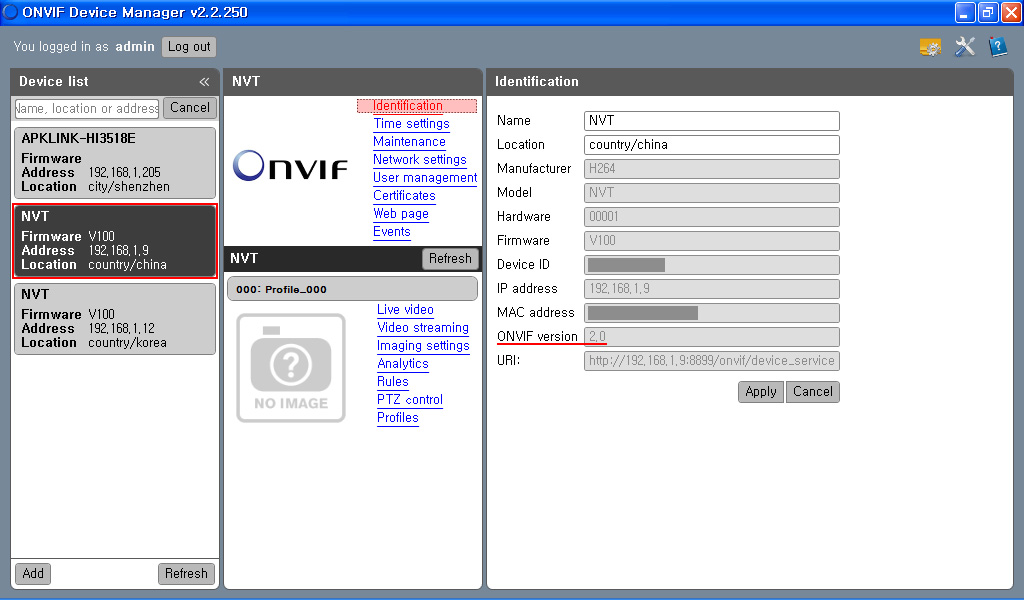
Allowed values: ContinuousMove, RelativeMove, AbsoluteMove, GotoPreset, Stop. Sets the preset profile token which is executed with GotoPreset. Allowed values: floating point numbers, 0 to 1. Sets how much PTZ should be executed in one request. Allowed values: ZOOM_IN, ZOOM_OUT, NONEĭistance coefficient. String or list of strings that point at entity_ids of cameras. If your ONVIF camera supports PTZ, you will be able to pan, tilt or zoom your camera. If you are running into trouble with this sensor, please refer to the Troubleshooting section. When the last backup of the device configuration has been retrieved. When the device clock was last synchronized. Whether or not the device is actively recording.

The cause can be tamper actions like camera movement or coverage.ĭetects any kind of tampering to the image sensor. Amcrest is known to use this as a doorbell button press on the AD410.ĭevice reports a large portion of the video content changing. The rule is configured for an area defined by a polygon.Ī digital input was triggered on the device. Polygonal field detection determines if each object in the scene is inside or outside the polygon.Ĭell based motion detection determined by placing a grid over the video source and determining changes.ĭetects any motion against the specified motion region. To help with development of this component, enable info level logging for and create an issue on GitHub for any messages that show “No registered handler for event”. Below is a list of currently supported event topics along with the entities they create. This integration uses the ONVIF pullpoint subscription API to process events into sensors that will be automatically added to Home Assistant. This may help with playback or crashing issues from Wi-Fi cameras or cameras of certain brands (e.g., EZVIZ). ( Advanced Mode only) Rewrite the camera timestamps. The possible options are: tcp, udp, udp_multicast, http.Įxtra options to pass to ffmpeg, e.g., image quality or video filter options. You can configure specific FFmpeg options through the integration options flow by clicking the gear icon on the top right of the integration details page. You may disable unwanted entities through the Home Assistant UI. However, you may want to use a lower quality image.

Usually, the first profile has the highest quality and it is the profile used by default. This integration will add entities for all compatible profiles with the video encoding set to H.264. Each profile provides different image quality, or in the case of an NVR, separate connected cameras.


Most of the ONVIF devices support more than one audio/video profile. If running Home assistant Core in a venv, ensure that libxml2 and libxslt python interfaces are installed via your package manager.


 0 kommentar(er)
0 kommentar(er)
